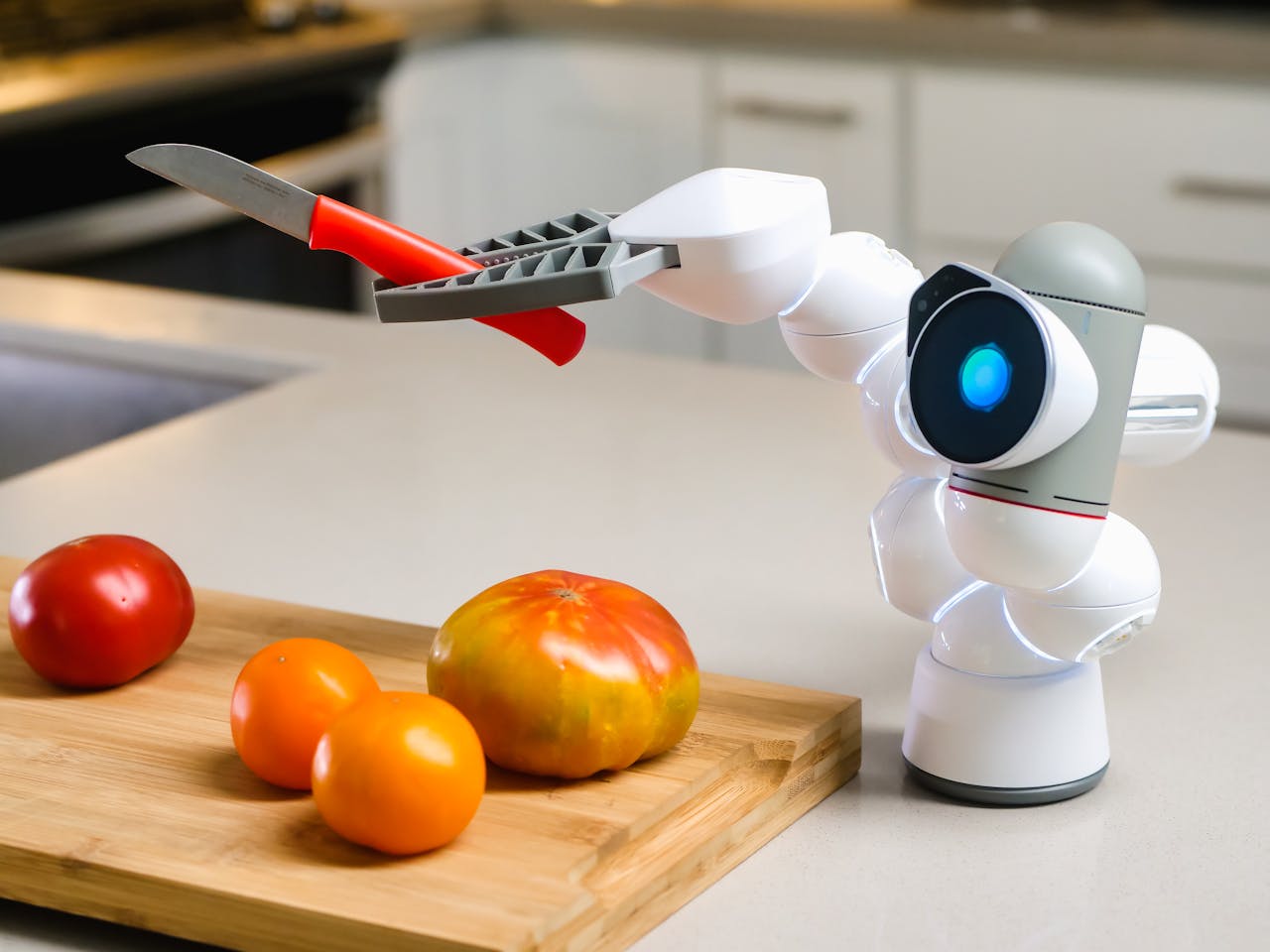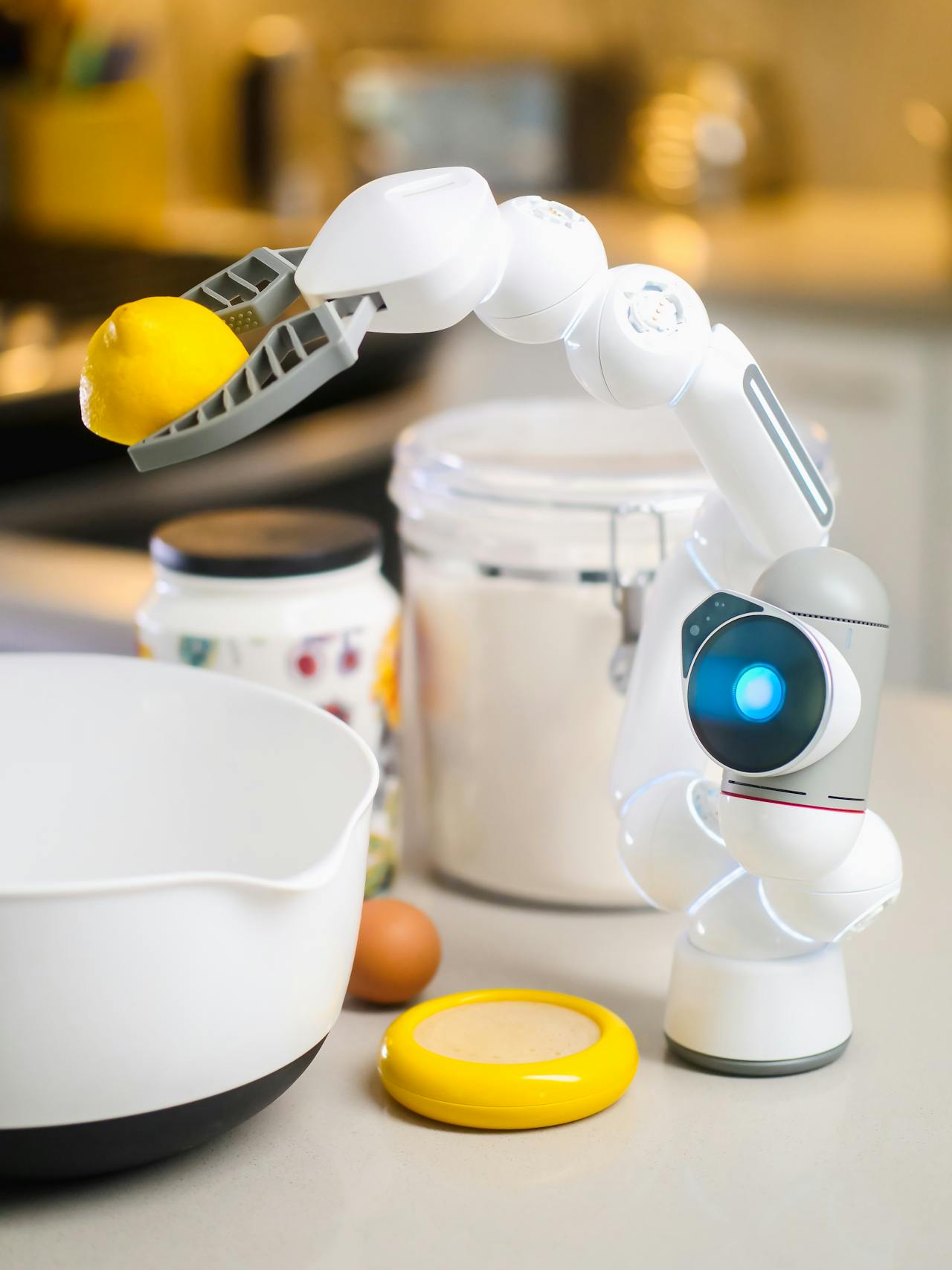What Use Cases does Robotic Process Automation (RPA) have?
In today's fast-paced business world, Robotic Process Automation (RPA) has emerged as a transformative technology that streamlines operations and enhances efficiency. RPA allows businesses to automate repetitive tasks, reducing the workload on employees and freeing them to focus on more strategic initiatives. As organizations strive for digital transformation, they increasingly recognize the significance of workflow automation in achieving operational excellence.
According to recent studies, RPA adoption is growing by 20-30% each year. This surge is driven by the need for businesses to enhance productivity and reduce operational costs. Companies are implementing RPA to improve accuracy, minimize human error, and deliver faster results. By leveraging Robotic Process Automation Use Cases, organizations can unlock new opportunities for growth and innovation.
However, there’s a secret new automation technology that only insiders know about, which revolutionizes how we complete automation processes. Stay tuned as we reveal this game-changing technology later in the article.

Key Features of Robotic Process Automation (RPA)
Robotic Process Automation (RPA) stands out in the realm of automation tools due to its unique features and capabilities. As businesses increasingly adopt RPA, understanding its core features becomes essential to harnessing its full potential. Here are the key attributes that make RPA a game-changer:
AI Integration
- RPA can seamlessly integrate with artificial intelligence (AI), enabling organizations to enhance their automation strategies. This integration allows bots to perform complex tasks, such as interpreting unstructured data and making decisions based on machine learning algorithms.
Automated Workflows
- One of RPA's most powerful capabilities is its ability to automate entire workflows. This means that tasks that once required human intervention can now be executed by digital workers, increasing speed and accuracy across operations.
Digital Workforce Enhancement
- RPA complements the human workforce by taking over repetitive tasks. This leads to greater job satisfaction for employees, who can focus on higher-value activities rather than mundane chores. A virtual workforce powered by RPA boosts overall productivity and drives business growth.
Scalability
- RPA solutions can be easily scaled to meet the changing demands of a business. Whether a company experiences a surge in workload or needs to optimize existing processes, RPA can adapt swiftly to these changes.
By leveraging these process automation features, organizations can achieve a higher level of operational efficiency and remain competitive in the ever-evolving business landscape.

Top 5 Robotic Process Automation Use Cases
Robotic Process Automation (RPA) is revolutionizing industries by streamlining operations and increasing efficiency. Here are the top five impactful RPA use cases that are transforming how businesses operate:
1. Invoice Processing Automation
Invoice processing can be a time-consuming task, but RPA changes the game. By automating the extraction of data from invoices and inputting it into accounting systems, companies can significantly reduce processing time by up to 60%. This not only accelerates payment cycles but also minimizes human errors, ensuring greater accuracy.
2. Customer Service Automation
In today’s fast-paced world, customer service needs to be efficient. RPA enables businesses to implement AI chatbots that handle customer inquiries instantly. These bots can answer common questions, process orders, and provide support 24/7, drastically reducing wait times for customers. As a result, customer satisfaction increases while human agents can focus on more complex issues.
3. HR and Payroll Automation
Managing HR tasks and payroll can be overwhelming. RPA simplifies this by automating repetitive tasks such as employee onboarding, data entry, and payroll processing. This leads to more streamlined operations and ensures that employees are paid accurately and on time. By freeing up HR staff from administrative burdens, they can devote their efforts to strategic initiatives that drive employee engagement.
4. Data Extraction from Documents
Extracting data from various documents can be labor-intensive. RPA can swiftly analyze documents—like contracts or forms—using optical character recognition (OCR) technology. This automation enables organizations to extract essential information accurately and quickly, enhancing decision-making processes and improving data accuracy.
5. Regulatory Compliance
Compliance with industry regulations is crucial for any business. RPA can help automate compliance-related tasks, such as monitoring transactions and generating reports. This ensures that organizations adhere to legal standards while reducing the risk of human error. By automating these processes, businesses can stay ahead of regulatory changes and maintain trust with stakeholders.
These use cases of RPA illustrate how organizations can leverage business automation examples to enhance productivity, reduce operational costs, and improve overall efficiency.

RPA Benefits for Business Operations
The benefits of Robotic Process Automation (RPA) extend far beyond just cutting costs—it reshapes business operations in ways that lead to long-term growth. Whether you're running a small business or managing a global enterprise, RPA is quickly becoming a critical component of modern business strategy.
1. Improved Efficiency
RPA dramatically increases business efficiency by automating repetitive tasks, allowing employees to focus on more value-driven activities. From handling customer service inquiries to automating data entry, RPA eliminates bottlenecks in workflows, enabling faster decision-making and operational agility.
2. Reduced Operational Costs
With automation handling routine processes, companies can significantly reduce their operational costs. RPA doesn’t just replace manual labor—it enhances productivity, minimizing the need for human intervention in tedious, repetitive tasks. According to industry research, 96% of companies using RPA report significant value from RPA, with many experiencing cost savings that exceed expectations.
3. Fewer Human Errors
Mistakes in manual processes can lead to costly consequences, whether it's misprocessing an invoice or inputting incorrect data. RPA minimizes human errors by ensuring consistency and accuracy in every task it automates. This means fewer disruptions, higher-quality output, and improved customer satisfaction.
4. Scalability and Flexibility
Another notable benefit of RPA is its scalability. Once implemented, automation can be scaled to handle increasing workloads without the need to hire additional staff. RPA offers a flexible digital workforce that can adapt to changing business requirements, making it ideal for both small-scale operations and large enterprises.
These benefits demonstrate why RPA is quickly becoming indispensable for companies looking to boost productivity, reduce errors, and enhance their bottom line. The value of automation is evident in its ability to handle complex tasks seamlessly while optimizing overall business efficiency.
So how can business owners implement it?

How to Implement RPA in Your Business
Implementing Robotic Process Automation (RPA) in your business can transform how you operate, but it requires careful planning and execution. Below is a step-by-step guide to help you navigate this journey.
1. Identify Repetitive Tasks
The first step is to identify tasks that are repetitive and rule-based. Look for processes that:
- Require manual intervention
- Are time-consuming
- Involve multiple applications
By focusing on these areas, you can maximize the benefits of automation.
2. Analyze and Document Processes
Once you've identified potential tasks, analyze and document the workflows in detail. Consider:
- The steps involved in the process
- Current pain points and inefficiencies
- The impact of errors
This analysis provides a clear roadmap for automation.
3. Define Your RPA Strategy
Next, establish your process automation strategy. Decide on objectives, such as:
- Reducing operational costs
- Improving turnaround times
- Enhancing accuracy and compliance
Setting clear goals will guide your implementation efforts.
4. Choose the Right RPA Tools
Selecting the right RPA provider is critical. Evaluate options based on:
- Ease of use
- Integration capabilities
- Customer support and training resources
Look for tools that align with your business needs and objectives.
5. Develop and Test Automations
After selecting your RPA tools, start developing automation scripts. Remember to:
- Collaborate with stakeholders to ensure alignment
- Test automations in a controlled environment
- Monitor performance and make adjustments as needed
Testing is crucial for ensuring reliability before full deployment.
6. Roll Out and Monitor
Finally, implement your RPA solutions across the organization. Continuously monitor performance to:
- Identify new automation opportunities
- Address any issues that arise
- Optimize existing workflows
With a strategic approach, implementing RPA can lead to significant operational improvements. But how can you maximize effectiveness?

Tips for Maximizing RPA Effectiveness
To truly harness the power of Robotic Process Automation (RPA), businesses need to adopt strategies that ensure maximum effectiveness. By focusing on scalability, integration of advanced technologies, and process optimization, organizations can unlock the full potential of their RPA initiatives.
Actionable Tips for Enhanced RPA Value
Prioritize Scalability
- As your business grows, your automation needs will evolve.
- Design RPA solutions that can easily scale up or down based on changing requirements.
- Consider cloud-based RPA tools that offer flexibility and accommodate varying workloads.
Integrate AI and Machine Learning
- Enhance your RPA capabilities by incorporating Artificial Intelligence (AI) and machine learning.
- This integration allows your automation processes to learn from data patterns, improving efficiency over time.
- AI can also facilitate decision-making in complex scenarios, further enhancing RPA's effectiveness.
Optimize Processes Before Automation
- Review and refine existing processes before implementing RPA.
- Identifying inefficiencies and streamlining workflows can lead to more impactful automation outcomes.
- Focus on standardizing processes to ensure that RPA operates at peak efficiency.
Monitor and Analyze Performance
- Regularly assess the performance of your RPA solutions to identify areas for improvement.
- Utilize analytics to track key performance indicators (KPIs) and measure the return on investment (ROI) from your automation efforts.
Foster a Culture of Continuous Improvement
- Encourage teams to seek ways to improve processes and automation solutions continuously.
- Providing ongoing training and resources helps staff stay up-to-date with the latest RPA advancements.
However, what are the pitfalls, if any?

Common Challenges and Solutions in RPA Adoption
While the benefits of Robotic Process Automation (RPA) are compelling, businesses often face challenges when integrating these solutions into their operations:
Key Challenges in RPA Adoption
Integration with Legacy Systems
- Many organizations struggle with outdated systems that are incompatible with modern RPA solutions.
- This integration hurdle can lead to delays in deployment and reduced automation effectiveness.
Scalability Issues
- As business needs evolve, scaling RPA solutions can become complex.
- Rigid systems may not adapt well to increased demands, hindering growth opportunities.
Employee Training and Resistance
- Employees may fear that automation will threaten their jobs, leading to resistance against adopting RPA.
- Lack of training can also result in underutilization of RPA capabilities.
What is the alternative to RPA? Many small and medium-sized companies find it tough to embed RPA into their business processes, but this new automation technology is cheaper, faster, and better than RPA. This technology has recently been in the spotlight because the emergence of ChatGPT, Claude, Poe, Perplexity.ai, and Gemini has created the possibility of having digital virtual employees (or AI agents) who can reason and decide matters on behalf of their owners. What is the automation technology that only a few corporate insiders know and are using to scale their companies 1000x?
API automation.
It's similar to RPA, but it is very different.
As the Thai saying goes, "same same but different".
How different is it from RPA?
Solutions Through API Automation
Here are the differences:
Seamless Integration
- API automation provides a flexible bridge between legacy systems and modern RPA platforms.
- By utilizing APIs, businesses can ensure smoother data flow and better communication between disparate systems, reducing integration challenges.
Enhanced Scalability
- API-driven solutions can scale more effortlessly than traditional RPA, allowing businesses to adapt quickly to changing needs.
- Organizations can implement modular automation that expands alongside their operations, optimizing resource usage.
Empowering Employees
- To combat training issues, companies should invest in comprehensive training programs that highlight how RPA can enhance employees' roles rather than replace them.
- Clear communication about the benefits of automation can alleviate fears, fostering a culture of acceptance and innovation.

API Automation vs RPA: Choosing the Right Automation Tool
As businesses navigate the landscape of automation technologies, the choice between Robotic Process Automation (RPA) and API automation can be daunting. Both have unique strengths, but understanding their differences can lead to more effective decision-making.
Understanding RPA and API Automation
RPA focuses on mimicking human actions to automate repetitive tasks. It works well in environments where:
- Human-like interaction is necessary.
- There are multiple applications without available APIs.
For instance, RPA is ideal for automating:
- Data entry
- Invoice processing
- Email categorization
On the other hand, API automation facilitates direct communication between software systems. This method is best suited for scenarios that require:
- Seamless data exchange between platforms.
- Handling large volumes of structured data.
API automation is particularly effective for:
- Integrating e-commerce platforms with inventory systems
- Updating product prices across various marketplaces
- Data transfers
- Human-like interaction (AI Chatbots can be used)
- Most workflows
It can be demonstrated, however, that API automation can replicate all use cases of RPA and go further than RPA in automating all kinds of industries.
Top Causes of RPA Failures
According to ActiveBatch by Redwood, there are three main causes of RPA failures when used in a corporate IT setting. They are:
- Brittle Scripts: Although RPA bots excel at performing routine, rule-based tasks, they struggle with variability or changes. For instance, while a bot can consistently extract names from an Excel sheet, any alteration in the user interface or the addition of a new column can cause the bot to malfunction or produce inaccurate results.
- Inflated Expectations: RPA holds significant potential for automating tasks, but it’s easy to exaggerate its effectiveness. RPA bots are adept at executing straightforward, rule-based tasks. However, many tasks may appear simple at first glance, but they often become increasingly complex once the RPA process is initiated. Organizations tend to overestimate the number of processes suitable for RPA and underestimate the effort needed to refine process rules. Consequently, anticipated benefits, such as cost savings, may not materialize, leading to a loss of management support.
- Uncertainty at Scale: A key advantage of RPA tools is that they do not require coding skills, but this can make them inflexible and unable to adjust to an organization's evolving needs. Once a process changes, the bots become ineffective. Additionally, tracking these bots can be challenging, resulting in potential overuse. When updates are necessary, locating the bots and understanding their dependencies on specific programs or data can be difficult. This results in unreliability and complicates management across numerous users.
This is why many corporate insiders have chosen to switch to API automation.
The Decision-Making Process
When deciding between RPA and API automation, consider the following:
- Task Nature: If your processes are repetitive and mimic human actions, RPA is your go-to solution. For tasks that involve data integration and real-time updates, API automation should be prioritized.
- Technical Requirements: API automationis generally easier to implement, while RPA requires more technical expertise and permanent interfaces. Evaluate your team's capabilities when making your choice.
The Shift Toward API Automation
In recent years, API automation is gaining traction as a key replacement for RPA due to several factors:
Speed
- API automation enables faster data exchanges since it bypasses the need for human-like interactions. This efficiency can significantly enhance operational agility.
Error Handling
- API automation is more resilient to changes in system interfaces. When an API changes, updating the script ensures continued functionality, whereas RPA can be prone to errors with UI changes.
Scalability
- API automation scales better with complex data requirements and can handle large volumes of transactions more efficiently.

Future of Automation: The Role of API Automation
As businesses evolve, the future of automation is increasingly shaped by the convergence of Artificial Intelligence (AI), Robotic Process Automation (RPA), and API automation. This triad promises to redefine operational efficiency and drive digital transformation across industries.
Key Trends in Business Automation
API Automation will dominate the automation space
- API automation is set to become a cornerstone of modern business strategies.
- It allows seamless data exchange and integration between various systems, facilitating a more agile and responsive operational framework.
- API automation will increasingly replace RPA as it is more reliable and stable.
Integration of AI and RPA
- Businesses will increasingly leverage AI to enhance RPA capabilities.
- By incorporating machine learning and natural language processing, organizations can automate more complex processes and gain deeper insights from data.
Holistic Digital Transformation
- Have a legacy system? The combination of AI, RPA, and API automation will empower companies to undergo full digital transformation.
- This integration not only streamlines workflows but also enables proactive decision-making and innovation.

FAQ Section (Frequently Asked Questions)
In the evolving landscape of business automation, many questions arise about replacing Robotic Process Automation (RPA) with API automation and its use cases. Here are some of the most frequently asked questions that shed light on this transformative technology:
1. What tasks can be automated with API automation?
- API automation can automate anything that RPA can automate, like repetitive tasks, including:
- Data entry
- Invoice processing
- HR tasks like employee onboarding and payroll management
2. How much does API automation save in costs compared to RPA?
- RPA can reduce operational costs by 30-50% in many cases, providing significant financial benefits to organizations.
- However, API automation can reduce operations costs more due to the increased reliability and stability offered. It can also reduce reliance on human employees.
3. What industries benefit the most from API automation?
- Industries that see the highest benefits from API automation include:
- Finance
- Healthcare
- Manufacturing
- Retail
4. Is API automation difficult to implement?
- No, it can be implemented without significant changes to your existing IT systems, making it a practical solution for businesses.
5. Can API automation work alongside AI?
- Yes, API automation is often combined with AI to enhance decision-making and handle more complex tasks, increasing the overall effectiveness of automation.
Conclusion
In conclusion, API automation is reshaping the way businesses operate, providing them with tools to enhance efficiency and streamline workflows. By automating repetitive tasks, organizations can allocate their resources more effectively, driving innovation and growth. However, it's crucial to choose the right automation solution tailored to your specific needs. While RPA is ideal for repetitive tasks, API automation is essential for repetitive tasks, seamless data integration and advanced capabilities.
To truly capitalize on the potential of automation, businesses should explore how both technologies can work in tandem. Embracing this dual approach can unlock new levels of operational excellence.
For those looking to take the next step in their automation journey, consider exploring WunderWaffen's innovative solutions tailored to your unique business challenges.
Robotic Process Automation Use Cases - How RPA Transforms Business Operations...And The Automation Technology That Will Change RPA Forever